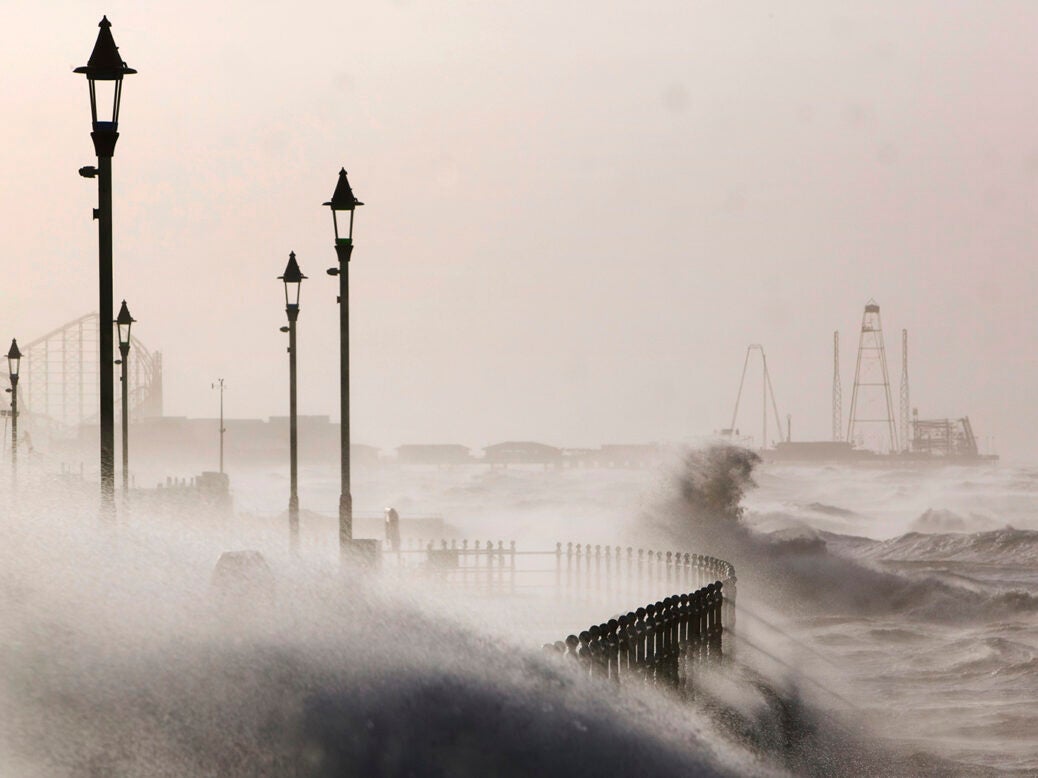
The roguest of rogue waves has entered the history books. A four-storey high, “once-in-a-millenium” wave was documented in November 2020 off the coast of Ucluelet in British Columbia, Canada, and this week was confirmed by scientists as the “most extreme” of its kind.
Occurring out of nowhere in deep water, often far out at sea, the rogue wave phenomenon was widely considered the stuff of maritime myth until one was caught on camera in 1995. Named “Draupner” after the Norwegian drilling platform into which it crashed, the 26m-high monster was captured by a laser pointing down from the top of the rig. Suddenly historical mysteries, such as the vanishing of the cargo ship MV München and its 28-person crew in 1978, had a probable cause.
Shorter than Draupner at 17.6m, the Ucluelet wave was three times the height of its surrounding sea state. As rogue waves are defined in relation to their nearby waves, this makes it the biggest on record.
Scientists at the University of Southampton have shown that such waves are growing in size at a rate of about 1 per cent a year, but little is known about whether these destructive forces will become more frequent in future.
Observing the state of the sea in general is difficult, explains Thomas Adcock, a professor at the University of Oxford, because the lack of wave measurements taken beyond major oil drilling regions. The “nasty environment” makes it expensive to leave measuring rigs out in the middle of the ocean purely for scientific ends. What research into climate change’s impact on wave behaviour does reveal, however, is that regular storm surges are a much more fearsome threat than rogue waves.
“Sea levels are projected to rise about half a metre by the end of the century,” warns Richard Allan, professor of climate science at Reading University, due to warming caused by carbon emissions that have already been released, “though up to 1.5m cannot be ruled out if we fail to drastically reduce greenhouse gas emissions and ice sheets become unstable”.
Half a metre might seem minimal compared to a towering rogue wave, but it would put more than 800 million people living in almost 600 low-lying cities at risk. Coastal communities around the world have already suffered devastation from higher sea levels combined with heavier rainfall in recent years. In 2012 Superstorm Sandy’s 14-foot wave surged into New York harbour, and in December last year Hurricane Rai caused a combination of landslides and flooding in the Philippines that killed 400 people.
We shouldn’t just worry about storm surges but must prepare for them, argues Friederike Otto, a climatologist at Imperial College London. “Disasters occur when hazards meet vulnerability,” she says, “and when hazards become worse because of climate change, vulnerable populations are even more exposed.” Reducing poverty and vulnerability is essential, and should include investing in education, governance and early warning systems, she adds.
The upcoming report from the Intergovernmental Panel on Climate Change (IPCC), the UN body tasked with providing countries with regular scientific assessments, is expected to highlight these concerns when it is released on 28 February. From species extinction to ecosystem collapse, disease spread and crop failures, all are often made worse by rising temperatures and rising seas.
Where rogue waves produce nightmares that were once distant enough to drift into legend, the destructive power of the ocean is now increasingly close to home.
https://news.google.com/__i/rss/rd/articles/CBMiiAFodHRwczovL3d3dy5uZXdzdGF0ZXNtYW4uY29tL2Vudmlyb25tZW50L2NsaW1hdGUvMjAyMi8wMi9ob3Jyb3Itb2YtdGhlLWhpZ2gtc2Vhcy1jb21lcy1pbi1yb2d1ZS13YXZlcy1vci10aGUtc3RlYWR5LXJpc2Utb2Ytc3Rvcm0tc3VyZ2Vz0gEA?oc=5
2022-02-17 14:03:22Z
1289935199



Tidak ada komentar:
Posting Komentar